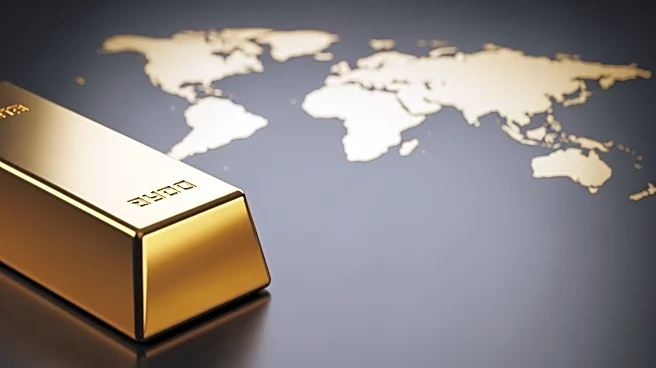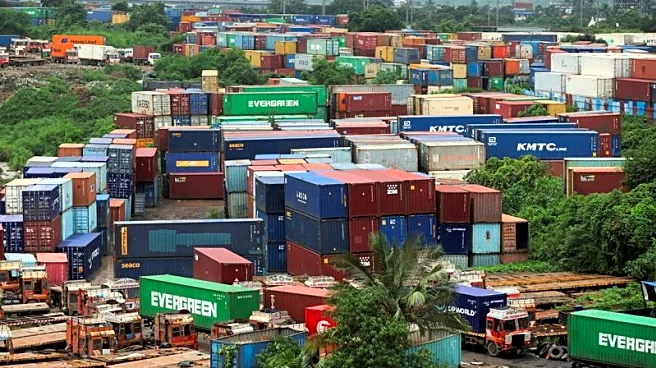What's Happening?
Central banks worldwide are significantly increasing their gold reserves, reshaping global precious metals markets. This trend reflects a strategic shift towards diversification and currency risk management.
In 2023, central banks purchased over 1,037 tonnes of gold, representing 30-35% of global gold mining output. Major economies like China, Russia, and Turkey are leading this accumulation, driven by geopolitical tensions and a desire for monetary sovereignty. The trend highlights a move away from traditional currency reserves towards gold as a stable asset.
Why It's Important?
The surge in central bank gold buying has profound implications for global financial markets. It indicates a shift in how countries manage economic risks and seek to protect their monetary independence. This trend could lead to increased competition for gold, affecting prices and availability for private investors. The move also reflects broader geopolitical dynamics, as countries seek to reduce reliance on the U.S. dollar and mitigate the impact of international sanctions. The structural changes in gold markets could influence investment strategies and economic policies worldwide.
What's Next?
As central banks continue to accumulate gold, the trend is expected to persist, driven by ongoing geopolitical tensions and economic uncertainties. This could lead to further shifts in global financial markets and influence central bank policies. Investors and market analysts will be closely monitoring these developments, as the demand for gold could impact prices and market dynamics. The trend also raises questions about the future of currency reserves and the role of gold in global economic stability.













